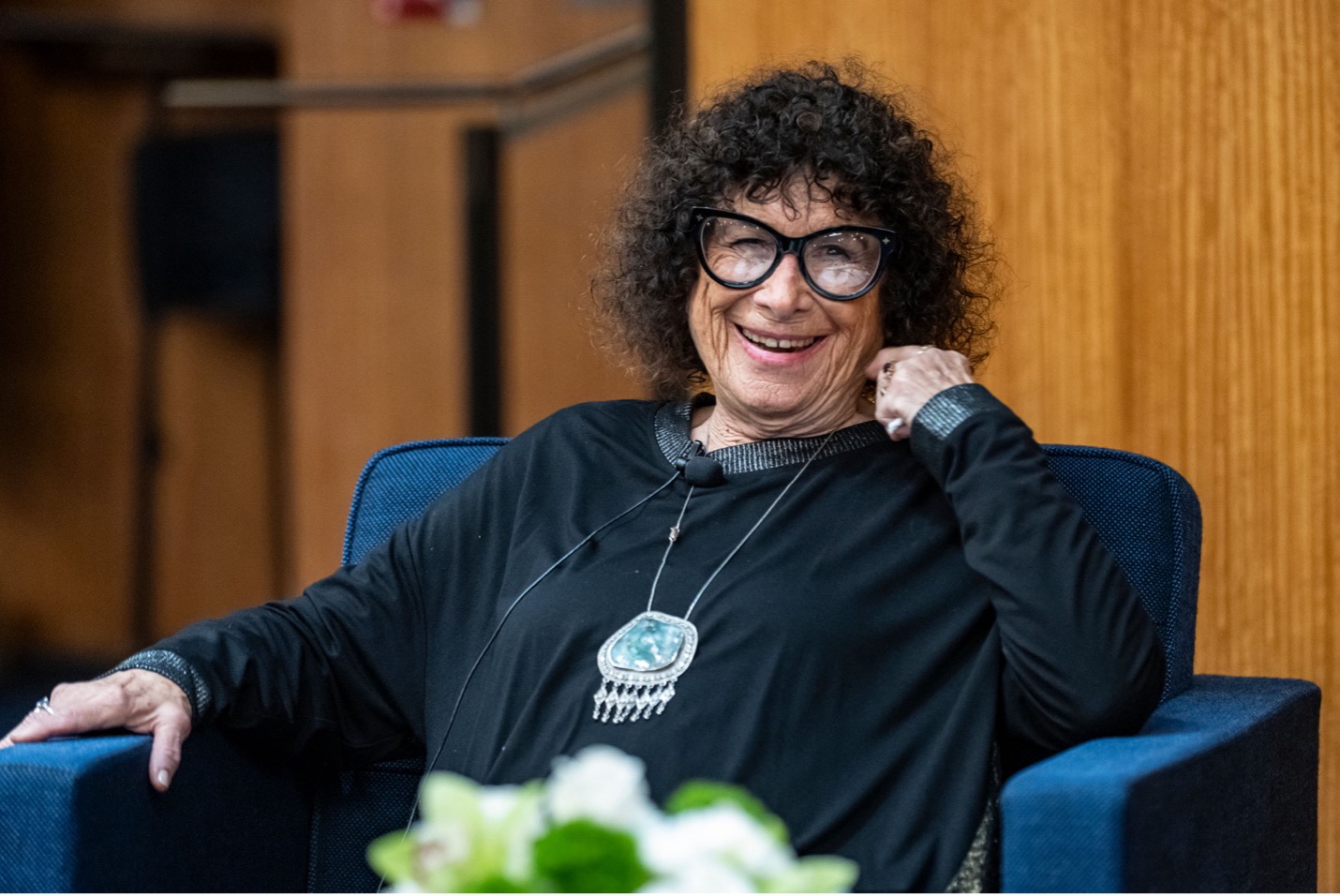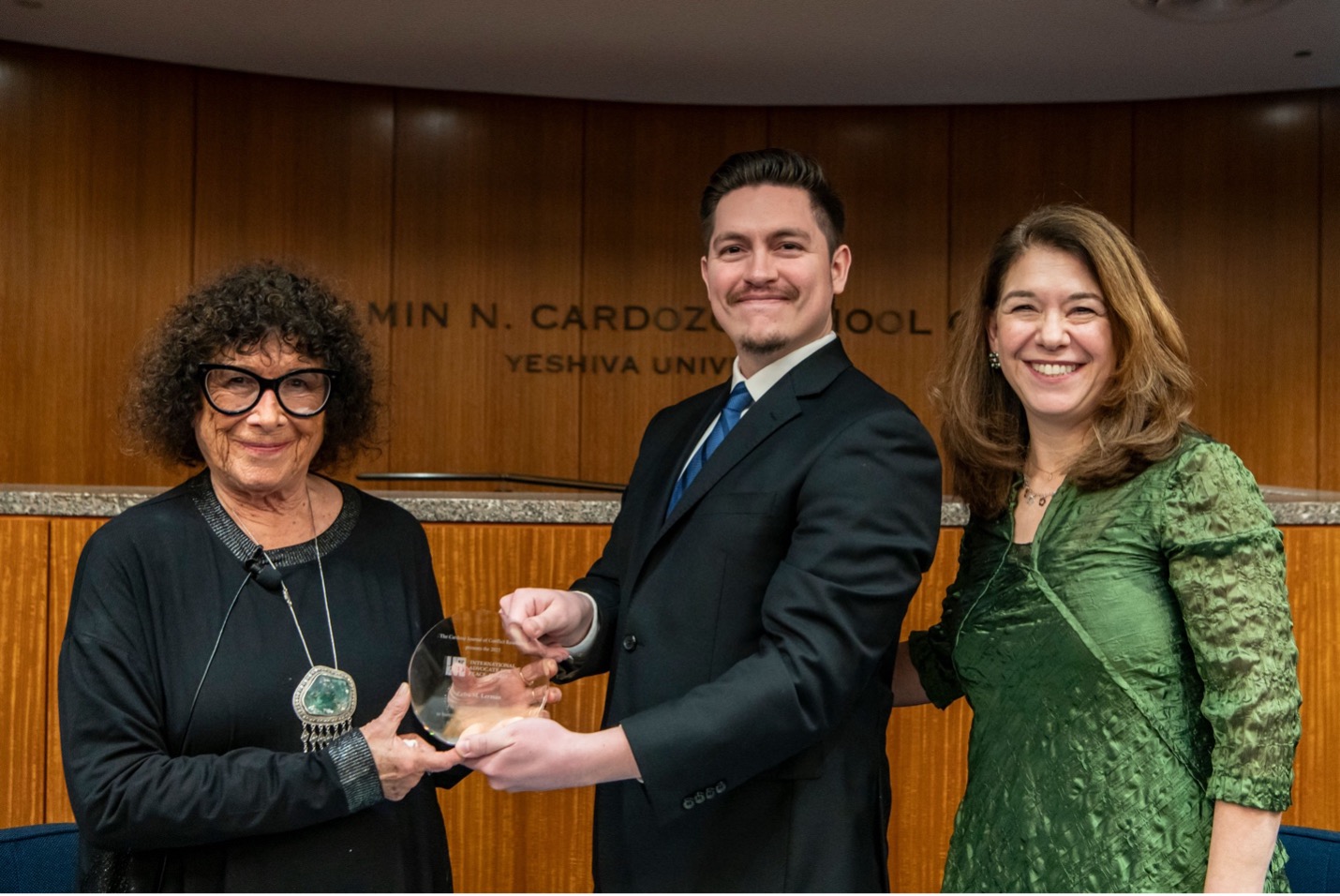Weizmann chemist’s lifelong commitment to building bridges with science

On March 6, Dr. Zafra M. Lerman, Weizmann Institute of Science graduate (PhD ‘69), received the 24th Annual International Advocate for Peace Award from Cardozo School of Law. This prestigious award, presented by the Cardozo Journal of Conflict Resolution, recognizes her innovative work in international peacemaking through the Malta Conferences Foundation. Launched by Lerman in 2003, the foundation brings together scientists from otherwise hostile Middle East countries to foster peace through scientific collaboration. The International Advocate for Peace Award places Lerman in rarified company – past recipients include President Jimmy Carter, Archbishop Desmond Tutu, Sir Paul McCartney, President Bill Clinton, and Gloria Steinem.
Peacemaking through Science Diplomacy
An Israeli American, Lerman uses science diplomacy as a bridge to foster peace. Her approach focuses on creating partnerships between scientists from countries with strained relationships, using their shared knowledge and respect for science to improve international relations, build mutual understanding, and promote scientific collaboration and discovery.
“Science is an international language,” Lerman explained while accepting her award. “A scientist from Bethlehem, Pennsylvania, and a scientist from Bethlehem, West Bank, use the same scientific notation and can communicate without understanding each other's spoken language.”

Weizmann Chemist, Human Rights Activist, Science Diplomat
Lerman received her PhD in Chemistry from the Weizmann Institute in 1969, where she worked in the lab of the late Prof. David Samuel, a chemist and neurobiologist, and according to Lerman, “one of the founding fathers of Weizmann’s Chemistry Department." Her research focused on secondary isotope effects. She later continued this focus at Cornell University, Northwestern University, and ETH Zurich, the Swiss Federal Institute of Technology.
A few years earlier, while pursuing her master’s degree at the Technion-Israel Institute of Technology, Lerman discovered that secondary isotope effects show temperature dependence. Secondary isotope effects provide valuable insights into the mechanisms of chemical reactions and the nature of the transition states involved. As a result of her discovery, many other scientists began studying the relationship between temperature and secondary isotope effects. At Weizmann she built upon this inventive research.
“The atmosphere [at Weizmann] was one of collegiality and cooperation despite our varied backgrounds, religions, and differing economic status,” recalls Lerman in her recent book.
After countless travels around the world, Lerman says she returns often to the Weizmann Institute. “It is my home away from home.”
“When you put people from different countries together – countries that at any given time may be in conflict – who speak the common language of science, it is impossible not to see each other’s humanity and the ways in which we are similar.” — Zafra Lerman, PhD
Becoming a Human Rights Advocate
Born in Haifa, Israel, Lerman’s early life was influenced by her Russian-born parents' dedication to building a Jewish state. A child with a curious spirit, rebellious nature, and scientific aptitude beyond her years, she was shaped by her parents’ work ethic and sense of purpose. Both of her parents were passionately involved in pioneering the early development of Israel. Spending her formative years in such a dynamic egalitarian community laid the groundwork for the chemist, leader, and human rights advocate she later became.
As a burgeoning young scientist, Lerman’s roots remained a driving force in her professional and personal paths. She served as chair of the American Chemical Society’s Subcommittee on Scientific Freedom and Human Rights from 1986 to 2011 and worked on numerous human rights cases worldwide, including in the former Soviet Union, Russia, China, Guatemala, Cuba, Peru, South Africa, and Iran. She was nominated for the Nobel Peace Prize in 2018, 2019, 2020, 2021, and 2023.
Lerman went on to publish numerous works on science, science education, and science diplomacy. In 2024, she published her memoir, Human Rights and Peace: A Personal Odyssey, where she describes her journey from growing up in Israel, to fighting for human rights, to advocating for peace through the conception, development, and launch of the Malta Conferences. (All proceeds from book sales go directly to the Malta Conferences to cover the expenses of all the participants from the Middle East for the upcoming Malta XI in Baku, Azerbaijan November 2025).
Transforming Science Education
While establishing herself as an educator, Lerman became known for her innovative teaching methods, making science accessible and engaging for students from all backgrounds. At Columbia College Chicago, where she led the Institute for Science Education and Science Communication, she developed a unique approach that integrates art, music, dance, drama, and computer animation into science education. Her students were known to create performances of scientific concepts such as the depletion of the ozone layer, the formation of table salt, and the periodic table.
Lerman’s teaching methods has proven particularly successful with inner-city minority students and other non-science majors. Many institutions around the world, including Princeton University, have adopted the approach.
“The main tenet in my life is that equal access to science education is a human right; it belongs to all,” writes Lerman.
The Malta Conferences
The Malta Conferences were born out of a need for scientific collaboration in the politically charged Middle East.
“The Malta Conferences are the only platform in the world where scientists from fifteen Middle East countries are collaborating and cooperating on scientific issues as well as developing professional and personal relationships,” Lerman added in her acceptance speech.
Against the backdrop of the Second Intifada and barely two years after 9/11, Lerman organized the first conference in 2003. Even the location – the remote island of Malta – was chosen for its limited accessibility during times of conflict.
In the years to follow, the conference has been held in different locations and remains an important date on the calendar of the global scientific community, drawing attendees from Bahrain, Egypt, Iran, Iraq, Israel, Jordan, Kuwait, Lebanon, Oman, the Palestinian Authority (West Bank and Gaza), Qatar, Saudi Arabia, Syria, Turkey, and the United Arab Emirates. In addition to the Middle Eastern countries, Pakistan and Morocco are participating upon their request.
The conference provides forums to develop ideas and strategies to improve the quality of life in the region, such as water quality, alternative energy, food security, technology, and science education.
Participants stay together for five days, fostering deep connections and collaborations. The conference includes plenary lectures and workshops on various scientific topics. Each event is attended by a handful of Nobel laureates — a big draw since they don’t usually frequent many of the scientists’ home countries.
“My biggest delegation at the Malta Conference is from the Weizmann Institute,” Lerman revealed in a recent interview. “I think the people at Weizmann are more internationally oriented, more socially oriented, and it's part of their using their science for bridges and outreaches.”
Lerman’s Secret Sauce
How does Lerman help scientists from countries that span the political spectrum come together so harmoniously?
“Five days under the same roof, there is no choice,” she said, describing the conference structure. “You don't know who sits next to you for lunch or dinner or breakfast, all meals are eaten together…You talk to everybody, and at the end of the conference, tears are coming from everybody's eyes, and everybody is hugging and kissing each other, and feeling bad that it has come to an end. It looks like the end of a family reunion.”
What’s Next
Receiving the International Advocate for Peace Award is certainly not encouraging Lerman to rest on her laurels. She’s, of course, busy planning Malta XI. In addition, she hopes to expand her science diplomacy efforts to other regions, including Russia and Ukraine. With her pioneering and innovative approaches to science education, human rights, and science diplomacy, Lerman will continue to work tirelessly to make the world a more peaceful place, which is needed now more than ever,
Says Lerman in her book: “My dream has always been to achieve a critical mass of scientists to start a chain reaction for peace.”


